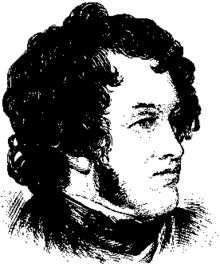This is an old revision of this page, as edited by Martarius (talk | contribs) at 10:59, 22 July 2010 (+cat). The present address (URL) is a permanent link to this revision, which may differ significantly from the current revision.
Revision as of 10:59, 22 July 2010 by Martarius (talk | contribs) (+cat)(diff) ← Previous revision | Latest revision (diff) | Newer revision → (diff)

The Tower of London has been represented in popular culture in many ways. As a result of 16th and 19th century writers, the Tower has a reputation as a grim fortress, a place of torture and execution.
- The Tower of London (1840) by William Harrison Ainsworth though written in fictional form, contrives to give a detailed account of the history and architecture of the Tower. He however included extensive underground passages and dungeons which did not actually exist.
- The Tower of London, as a place of death, darkness and treachery, is most famously evoked in William Shakespeare's play, Richard III, where it forms the backdrop of Richard's seizure of the throne and the scene of the notorious murder of the Princes in the Tower, and other victims (see above). A classic film version of this is Richard III (1955) with Laurence Olivier in the title role. This story is also reprised in the historical horror film Tower of London (1939) and its 1962 remake.
- The Tower is the setting for Gilbert and Sullivan's 1888 light opera The Yeomen of the Guard.
- Apparitions of Anne Boleyn at the Tower are the theme of the song "With Her Head Tucked Underneath Her Arm".
- The Mad Hatter Mystery, a detective novel by John Dickson Carr, where the Tower serves as scene of a murder (Harper & Row Inc., New York, 1933, 1961).
- There was an adventure computer game called Traitors Gate released by Swedish Daydream Software in 1999. In the game, the player is an American agent who must secretly steal the crown jewels in 12 hours. The game took place in a highly realistic recreation of the whole Tower area.
- The Tower Of London features frequently, and is described in exhaustive detail, in Neal Stephenson's Baroque Cycle, especially The System of the World, in which the tower is the setting for one of the series' grandest set pieces.
- The Tower Of London also features in the 2005 Christmas special of the long-running BBC television science fiction series Doctor Who, in which it was the secret headquarters of fictional military organisation UNIT.
- The Tower is the setting for the final battle in the anime version of Hellsing, where Alucard faces against Incognito.
- The Tower is the setting for Johnny English when the crown jewels are stolen by Pascal Sauvage.
- Sent by Margaret Peterson Haddix, Jonah and Katherine try to save their friends Chip and Alex from the Tower of London.
- The Tower of London is often portrayed in the Bartimaeus Trilogy, by Jonathan Stroud, as a prison.
- In the novel 'Stars and Stripes triumphant' the Tower of London is partially destroyed by invading American ironclads.
- In the 2010 series of British Television series, Doctor Who, The Tower Of London is seen to be present on the futuristc Starship UK (A spaceship housing the British residents in the 29th Century) The Beast Below